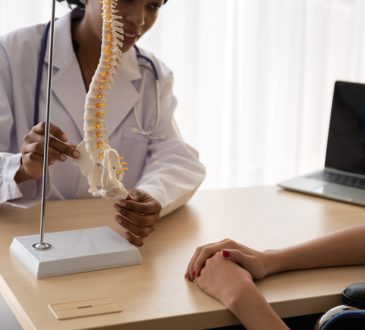
Adaptive sport has a way of rearranging expectations, not only for athletes but for everyone watching from the stands. At competitions like the Michigan Victory Games, athletes demonstrate how training, technology, and teamwork can turn obstacles into opportunities for growth. The events are accessible by design, inviting participants with varied mobility needs to test their limits and celebrate achievement. Families, volunteers, clinicians, and sponsors show up in force, creating a support system that amplifies every stride, throw, and lift. If you arrive curious, you often leave determined to See more of what’s possible when inclusion is the starting line.
Celebrating Inclusivity: The Spirit of the Michigan Victory Games
What sets this gathering apart is the way the field becomes a shared language of respect and aspiration. Competitors, including amputees and orthotic users, are welcomed as athletes first, with rules and equipment adapted to enable fair play. Volunteers greet every registration with warmth, coaches meet athletes where they are, and referees are trained to understand adaptive techniques. The atmosphere is not about lowering the bar; it’s about redesigning the playing field so excellence can be measured in many forms. The Michigan Victory Games showcase a living definition of inclusivity: not a promise, but a practice repeated heat after heat and match after match.
Moments that Shape a Community
The opening ceremonies set a tone of pride grounded in personal milestones and collective encouragement. You’ll see seasoned competitors mentor newcomers in the staging areas, offering tips on propulsion techniques, prosthetic adjustments, or how to pace a race. Family members rally in the stands and along the track, transforming individual accomplishments into shared triumphs that ripple outward. Coaches often emphasize strategy as much as strength, helping athletes convert adaptive techniques into competitive advantages. Each medal presentation becomes a celebration of preparation, tenacity, and the community that made the moment possible.
How Adaptive Sports Drive Physical and Emotional Recovery
When physicians recommend sport during rehabilitation, they’re tapping into a powerful engine for healing. Adaptive training builds cardiovascular endurance, muscular strength, and joint stability, all of which support everyday mobility for amputees and orthotic users. The feedback loop is positive: as athletes get stronger, they move with more confidence, and as movement becomes less painful or taxing, they pursue higher goals. The structure of practices and competitions also provides consistent routines that make adherence to therapy easier. By pairing medical guidance with sport-specific coaching, athletes create momentum that carries from the clinic into the rest of life.
The Psychology of Progress
Achievement in sport is measurable, and that clarity helps reframe recovery as growth rather than limitation. Personal bests in a timed sprint or precision gains in archery lend concrete proof that effort is paying off, reinforcing self-efficacy. Social reinforcement deepens the effect; teammates and coaches acknowledge progress that might go unnoticed in daily life. Emotional resilience strengthens as athletes learn to navigate pre-race nerves, calibrate expectations, and bounce back after setbacks. Over time, these skills translate beyond the track, helping athletes approach school, work, and relationships with a steadier sense of agency.
Event Categories Designed for Diverse Mobility Levels
The competition menu accommodates a wide range of motion profiles and energy demands so athletes can choose events aligned with their strengths. Track and field remain pillars—sprints, middle-distance races, shot put, discus, and javelin—modified with chairs, prosthetics, or throwing frames as needed. Boccia invites strategic precision, while powerchair soccer showcases speed and team coordination for those using powered mobility. Swimming and archery offer low-impact paths to high skill expression, enabling athletes to train technique intensely with minimal joint strain. Clear rules keep events both fair and exciting, reinforcing that adaptation and athleticism are complementary.
Classification and Fair Play
Classification systems group athletes by functional ability rather than diagnosis, which keeps competition meaningful and safe. Trained classifiers evaluate range of motion, muscle strength, coordination, and how mobility devices are used during performance. Events are then assigned to minimize advantage from equipment or impairment severity, allowing skill and preparation to shine. This framework helps spectators See more than a disability; they observe a level playing field where tactics, timing, and practice determine outcomes. The end result is a competition that’s as compelling as any mainstream meet, with the added richness of diverse movement strategies.
The Role of Sponsors and Community Programs in Athlete Support
Behind every successful season stands a coalition of supporters who keep the logistics rolling and costs manageable. Sponsorships offset travel expenses, event fees, and specialized equipment, making participation realistic for families of all income levels. Local rehabilitation centers often partner with teams to provide training space and access to clinicians who can troubleshoot fit issues or injury risks. Corporate donors contribute funds, but they also provide visibility that helps broaden media coverage and attendance. The Michigan Victory Games benefit from this ecosystem, where resources meet intent, and athletes are free to focus on performance.
What Effective Sponsorship Looks Like
The best partnerships are built on consistency, transparency, and athlete-centered outcomes. Multi-year commitments help programs budget for predictable needs like facility rentals and coaching stipends, while grants can underwrite prosthetics and orthoses tuned for sport. Sponsors who engage on-site—hosting skills clinics, supporting classification education, or introducing career pathways—often create deeper impact than those offering funds alone. Community foundations and alumni networks complement corporate giving by building a pipeline of volunteers, mentors, and advocates. Over time, this layered support sustains events, strengthens teams, and ensures that opportunities don’t depend on a single backer.
Training and Equipment Accessibility for Disabled Competitors
Access to the right gear can redefine what an athlete believes is possible. For runners using prosthetics, alignment, socket comfort, and component stiffness determine both speed and injury risk; for orthotic users, joint positioning and strap configuration affect power transfer and balance. Coaches collaborate with prosthetists and orthotists to tune setups seasonally, adjusting for changes in strength, weight, and technique. Equipment libraries and loaner programs allow newcomers to experiment before making significant investments, easing the barrier to entry. These practical steps ensure that ambition is guided by safe, individualized solutions rather than constrained by cost or guesswork.
Finding the Right Fit
Training plans mirror high-performance programs, tailored for energy management and device-specific mechanics. Periodization includes base building, event-specific work, and tapering, with emphasis on recovery modalities that respect skin integrity and socket tolerance. Cross-training in the pool or on handcycles boosts aerobic capacity without overloading complex joints or pressure points. Data tools—wearable sensors, video analysis, and force plates—help coaches fine-tune cadence, push angle, or throw trajectory. When athletes can iterate quickly on both technique and equipment, they convert marginal gains into podium finishes while minimizing overuse setbacks.
Social Connections and Mental Health Benefits of Participation
Athletic identity can be a powerful antidote to isolation, particularly for those navigating major life changes after injury or illness. Team practices create a steady rhythm of human connection, where inside jokes and shared goals reinforce belonging. Mentorship flows in both directions: veterans normalize challenges while newcomers bring fresh perspective and hunger. The sideline becomes a space where practical wisdom is exchanged—how to protect skin in humid weather, schedule tune-ups, or explain one’s sport at school or work. These conversations turn events into communities and communities into lifelines.
A Network That Extends Beyond the Track
Social bonds forged in competition often extend into advocacy, job networking, and mutual aid. Athletes build confidence not only from medals but from the knowledge that their stories resonate and matter. Caregivers and family members also gain allies, trading strategies for transportation, insurance navigation, and time management. The visibility of thriving teams encourages local organizations to host clinics, expand accessible recreation hours, and update facilities. In this growing ecosystem, athletes and supporters invite the public to See more than a highlight reel—they offer a model for how inclusion enriches every layer of civic life.
How Adaptive Competitions Inspire Public Awareness in 2025
As media habits evolve, adaptive sports are finding new pathways to reach audiences who might never have attended a meet. Livestreams with clear commentary, athlete-led social channels, and partnerships with schools make the action easy to discover and share. The Michigan Victory Games exemplify how storytelling—training diaries, equipment breakdowns, and post-race reflections—can turn casual viewers into informed fans. Employers and civic leaders increasingly recognize the link between sport participation and leadership potential, inviting athletes to speak at conferences and community events. When visibility is backed by education, awareness shifts from inspiration alone to informed support.
Shaping Perception Through Participation
Public understanding deepens when spectators witness classification in action, see adaptive techniques up close, and learn how rules prioritize safety and fairness. Teachers bring classes to meets, framing disability as a dimension of human diversity rather than a limitation. Municipalities adapt playgrounds and trails after observing what inclusive design enables on the field. Sponsors expand from one-off donations to strategic initiatives that grow talent pipelines and coaching resources. By showing, not telling, competitions invite everyone to come and See more, transforming curiosity into engagement and engagement into lasting change.




